Mullein moth
Cucullia verbasci
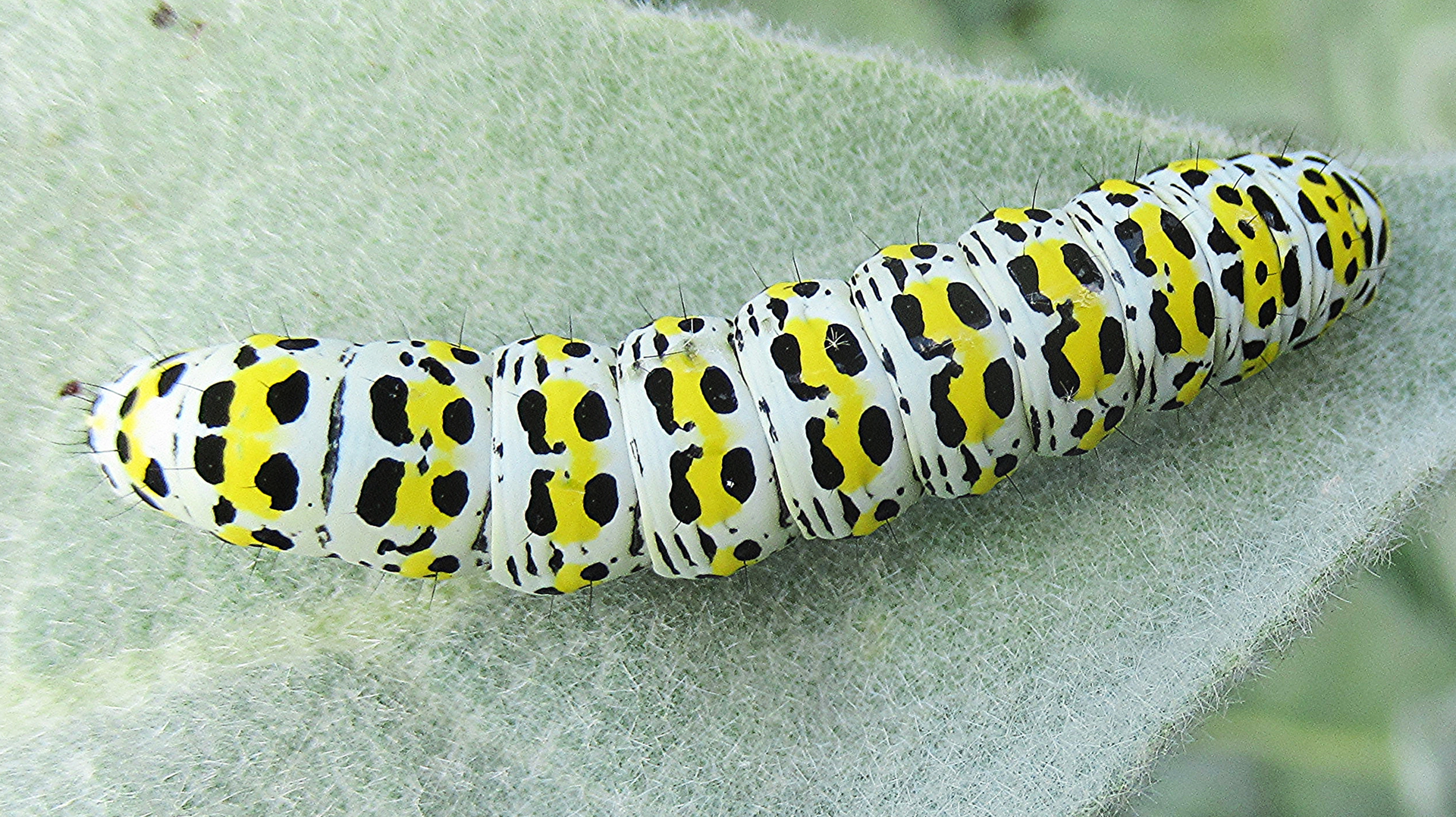
TQ4893 19/05/2024 ©Brian Ecott
Mullein moth
Cucullia verbasci
caterpillars feed on Aaron's Rod, Figwort and Buddleia from May to July.
Drinker moth
Euthrix potatoria

TQ4793 16/05/2024 ©Raymond Small
Drinker moth caterpillars are seen during August and September before they hibernate. They resume feeding on coarse grasses and reeds from April until June.
Ramshorn Bagworm
Luffia lapidella

TQ4692 02/05/2024 ©Raymond Small
These larvae construct cases from lichens in which they live. Only parthenogenetic (self-fertile) wingless females are known in this species.
White Plume
Pterophorus pentadactyla
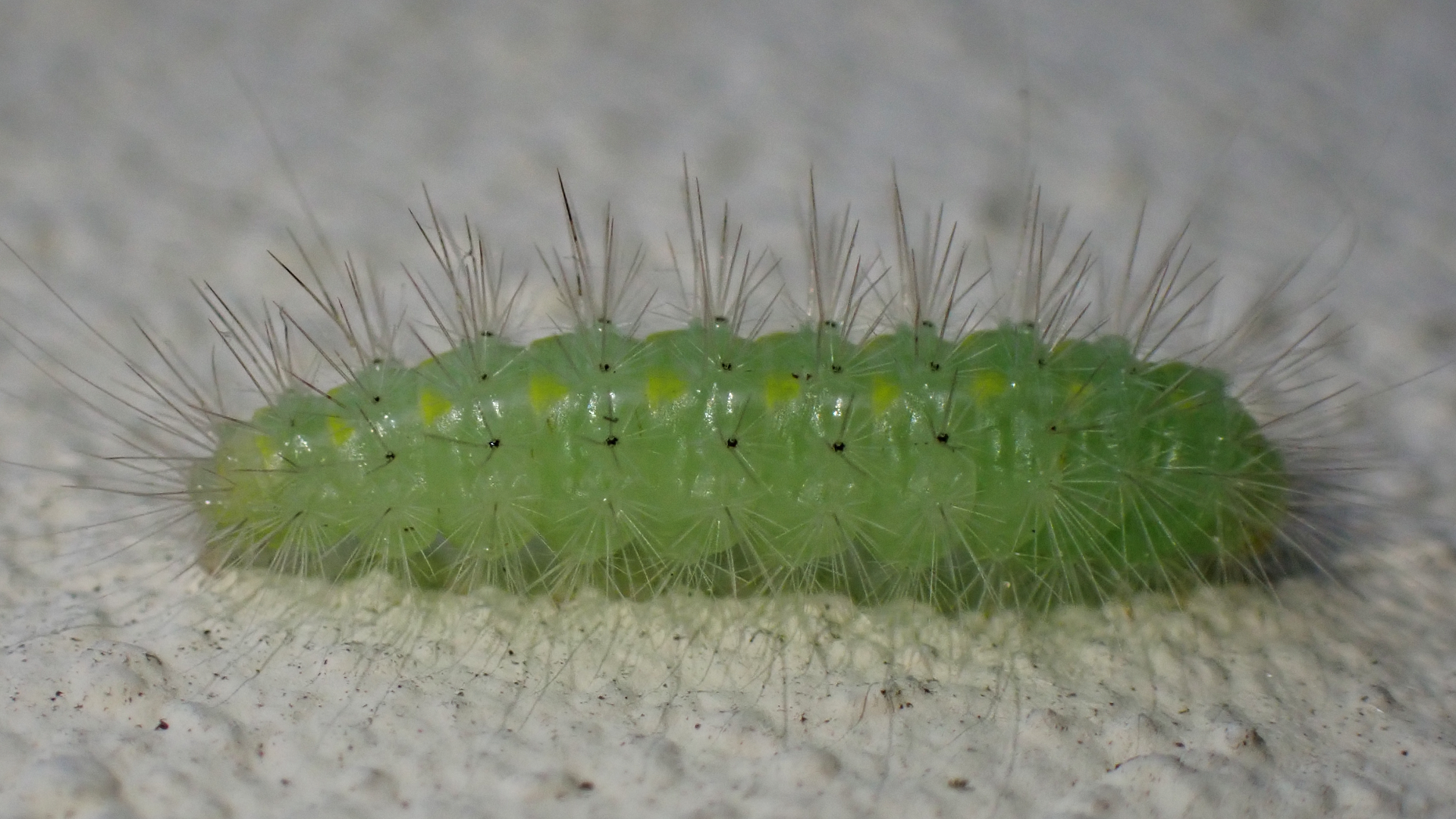
TQ4692 04/06/2024 ©Raymond Small
Larvae of the White Plume feed on bindweed.
Water-droplet Brown
Depressaria daucella
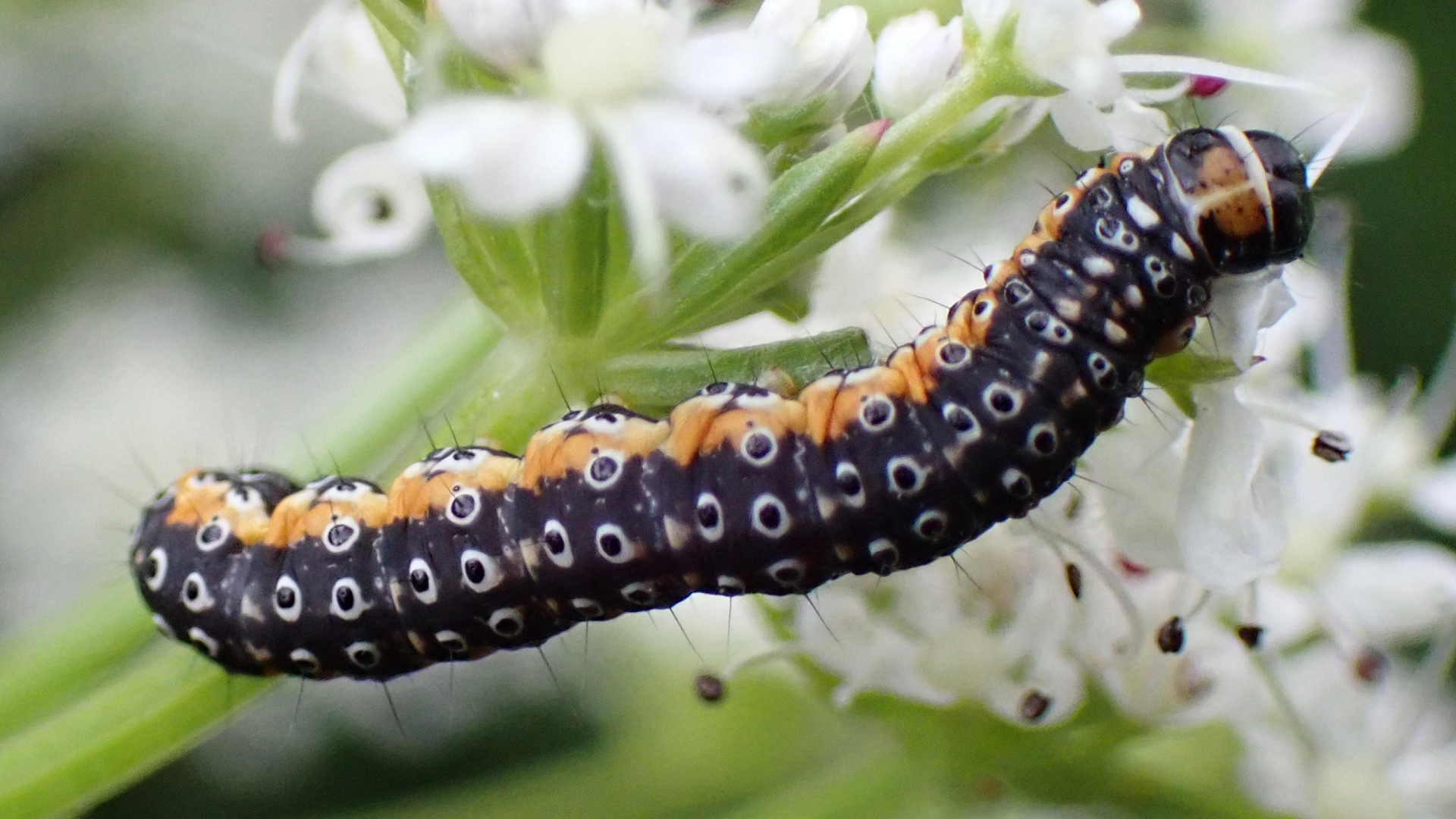
TQ4793 11/06/2024 ©Raymond Small
The Water-dropwort brown is a rather plain moth. Its much more attractive larvae feed on flowers and seeds of Hemlock water-dropwort, a highly poisonous plant (to humans). The larvae stitch florets of the umbellifer together with tough silken threads to form a hidden tunnel. They burrow into the stem usually close to a joint and then pop out throughout the day during sunshine. This species was formerly known as the Dingy flat-body.
Pebble Prominent
Notodonta ziczac

TQ4792 03/07/2024 ©Raymond Small
The Pebble Prominent moth inhabits woodland, scrub and heathland. Its larvae feed on poplar, sallow, willow and aspen.
Puss Moth
Cerura vinula
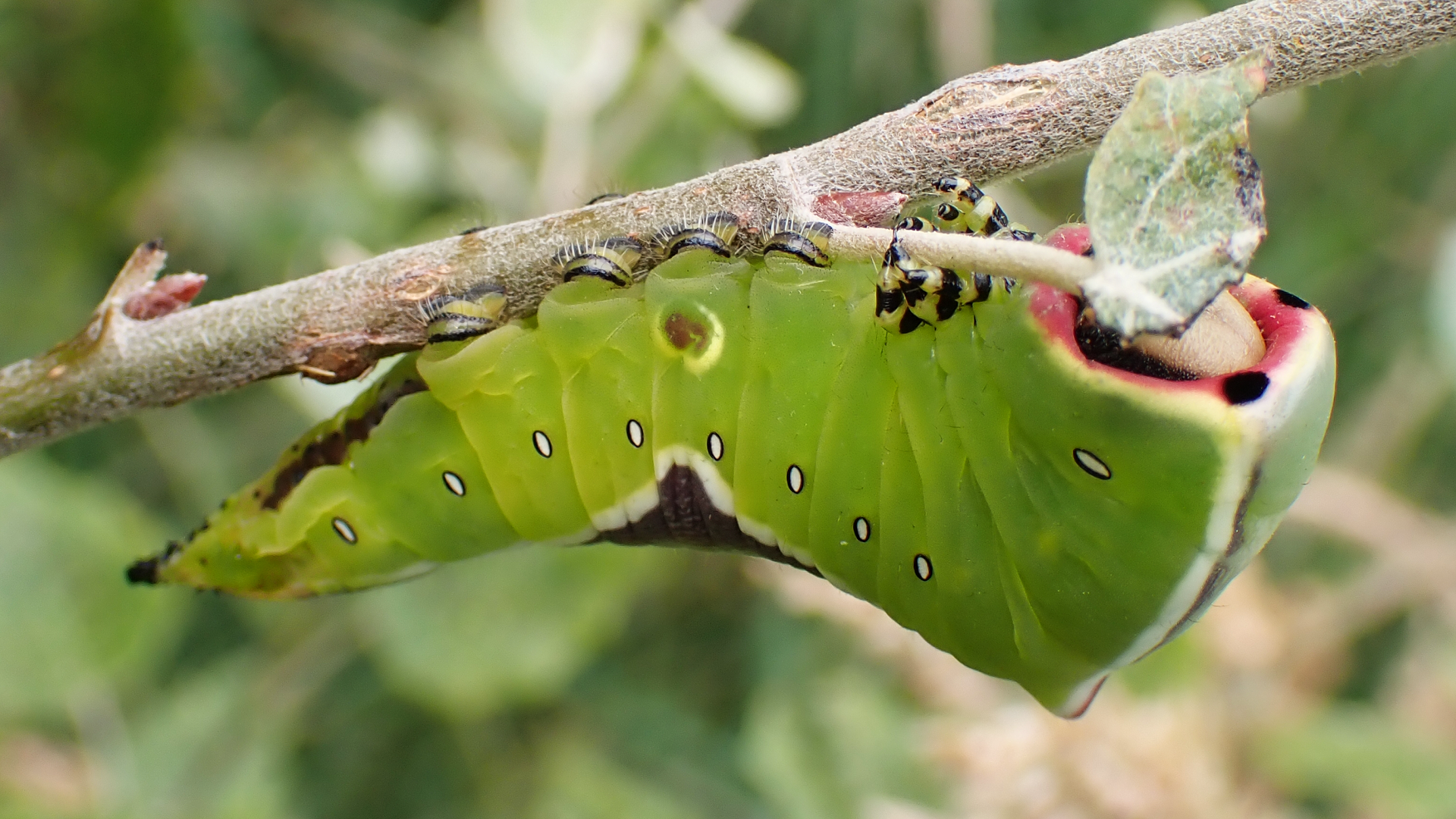
TQ4792 03/07/2024 ©Raymond Small
Caterpillars of the Puss Moth grow up to 65mm long. When threatened they rear up revealing their 'face' before dispensing formic acid. They live on poplar and willow from July until September.
Vapourer
Orgyia antiqua
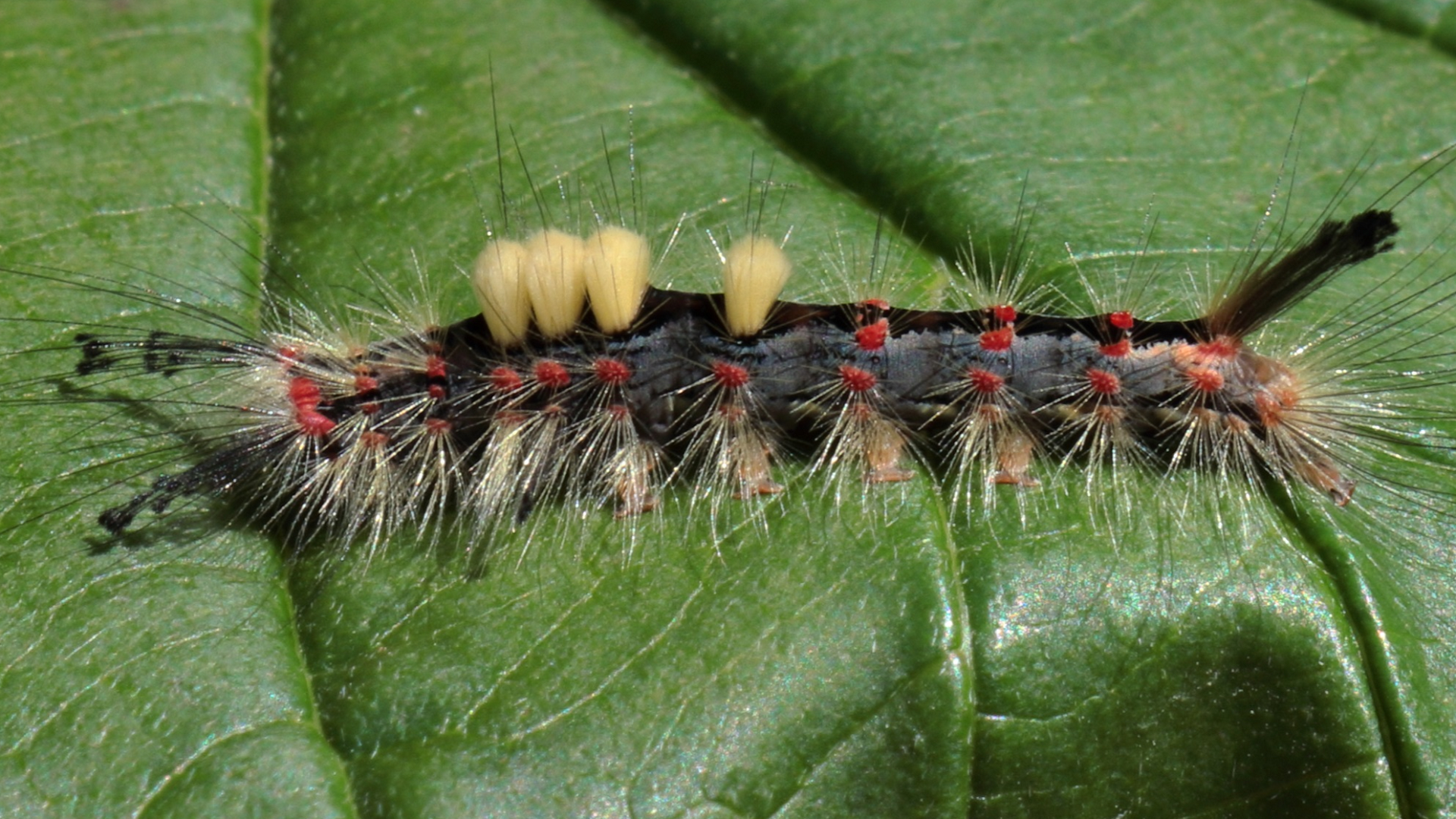
TQ4793 01/09/2024 ©Mike Rumble
Vapourer moth larvae feed on a range of broadleaved trees and shrubs. This species overwinters as an egg on the maternal cocoon with a mass of other eggs.
Knot Grass
Acronicta rumicis

TQ4792 13/09/2024 ©Raymond Small
The hairy larvae of the Knot Grass moth feed on herbaceous and woody plants. This species pupates on the ground and spends winter as a pupa.
Pebble Hook-tip
Drepana falcataria
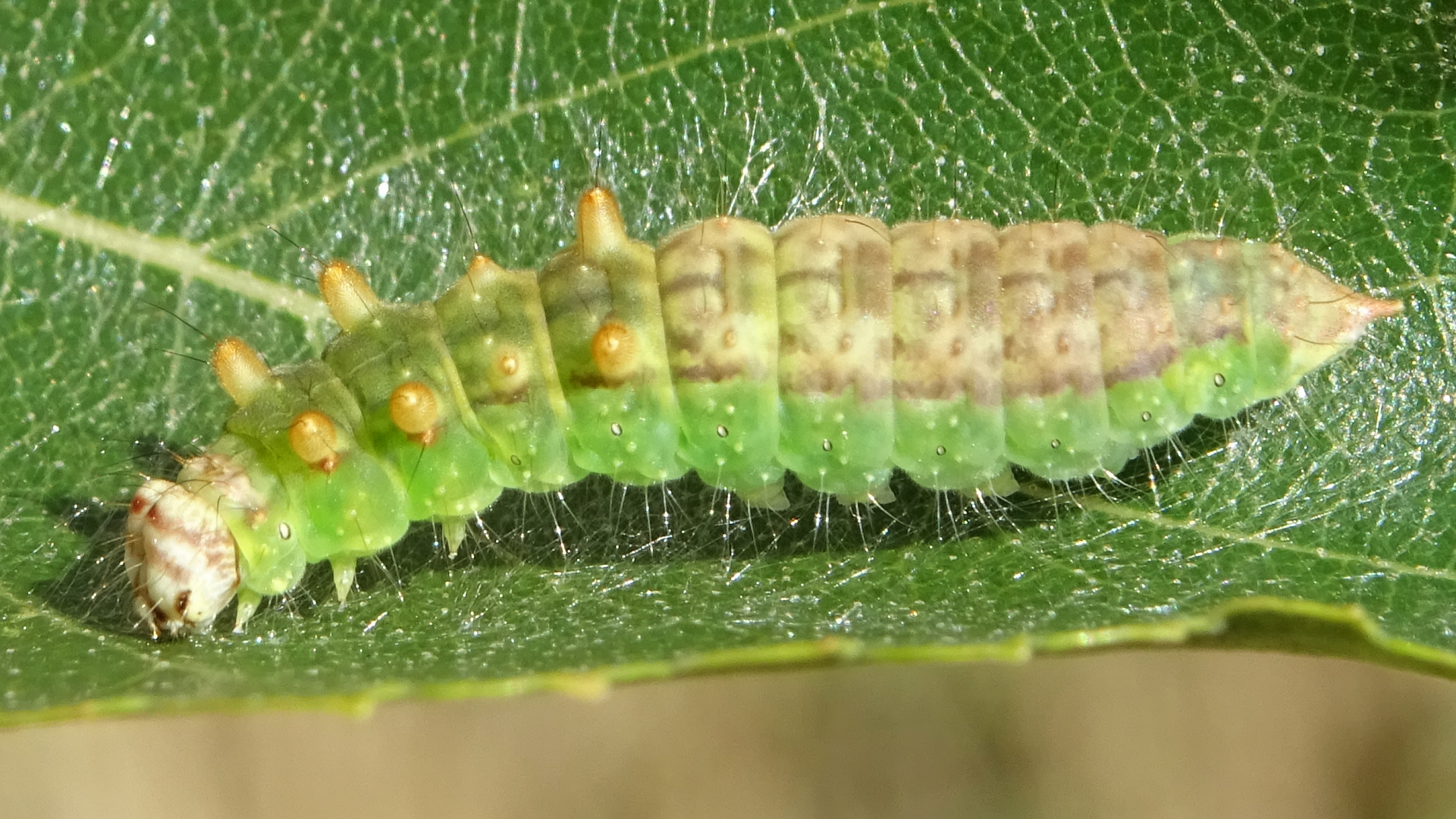
TQ4793 16/09/2024 ©Raymond Small
Pebble Hook-tip moth larvae feed on birch trees. This record has only been verified as plausible because caterpillar not found on birch, although birch trees were nearby.
© hainaultforest.net. All rights reserved.

